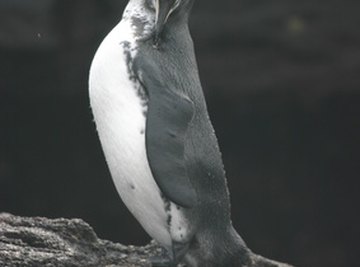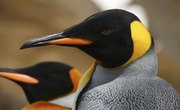
Penguins are at home in the cold waters of the Antarctic, in the land of ice and snow. You would never expect to see a penguin species living on a tropical island.
But one species does is Galapagos islands penguins that live on the Galapagos islands in Ecuador. While it can stand the hot temperatures on land, it still depends on cold ocean currents to survive.
Description of Galapagos Islands Penguins
Galapagos penguins are one of the smaller penguin species, averaging about 53 cm tall and weighing 1.7 to 2.6 kg. The males are slightly bigger than the females. Like other penguins, they are black on the back and white underneath, which helps camouflage them from predators when they're swimming.
A predator looking up would see the penguin's white stomach against the lighter surface. A predator looking down would see the dark back. Galapagos penguins also have a white line that runs back from their eye to under the chin and a black mark that starts at the top of their chest and runs to their feet.
Galapagos Penguin Facts: Predators
Because these penguins live on land and hunt in the ocean, they have both land and sea predators to worry about. These predators often go after penguins swimming alone or far from their hunting group. They'll also attack old, weak, sick and young penguins as they're easier targets. Many will eat penguin eggs as well.
On land, predators such as snakes, owls, hawks, seals and sea lions attack and eat both the penguins and their eggs. However, most of their predation risk occurs in the water.
In the water, fur seals, sea lions and sharks are the main predators that attack these penguins. Galapagos penguins are also at risk of getting caught in fishing line and nets, which results in a number of deaths eat year.
Diet and Breeding
Galapagos penguins mostly feed on small fish, though they will eat other foods such as mollusks and zooplankton. They prefer to swim underneath their prey and come at and attack the prey from below. Galapagos penguins mate for life and don't have a breeding season.
In years where food is plentiful, they can lay up to three clutches of eggs. One parent stays with the eggs or Galapagos penguin babies (aka chicks) while the other goes out to search for food. The penguins show affection by grooming one another and tapping their bills together. They also dance with one another in a ritualized manner.
Galapagos Island Penguins Habitat
True to its name, the Galapagos penguin lives only on the Galapagos islands. They don't migrate; they stay in the area around the islands all their lives. More than 90 percent live on the islands of Fernandina and Isabella.
Parts of Isabella lie a few miles north of the equator, so the Galapagos penguin is the only penguin with a population living in the Northern hemisphere. All other types of penguins live only in the southern hemisphere, which makes those few that live above the equator extremely unique. The penguins live on the coastal areas of the island and nest in burrows underground.
Conservation Status
The Galapagos penguin was put on the endangered species list in 1970. As of 2010, there were as few as 1,000 pairs in the wild. The penguin is especially vulnerable to natural weather pattern changes, which can wipe out its food sources and breeding grounds.
During an especially bad El Nino in 1982, 77 percent of the adult penguins died of starvation. Introduced predators and invasive species on the islands such as rats and cats are also a problem for nesting penguins.
